Here is a question and answer (Q & A) contribution, focused on the frog fauna in Singapore, with particular attention to the forest-specific species that live in the Central Catchment Nature Reserve. To protect our local frogs, we have to love them. To love our local frogs, we have to understand them.
Q: What are frogs?
A: Frogs are amphibians which live in and out of water. They have delicate skin which needs to be kept cool and moist all the time. As adults, they breathe with their lungs but through their thin skin as well. As tadpoles, they breathe with gills underwater, just as fish do.
Q: Why are frogs so sensitive?
A: Most species of frogs are adapted to live in specific habitats, with strict requirements on air quality, water quality, temperature range, humidity levels and vegetation integrity. Any deviation from these environmental norms can have negative effects on their life cycle and populations. Hence, frogs are recognised as important bioindicators.
Q: How many species of frogs live in Singapore?
A: Singapore has more species of frogs and toads than the United Kingdom or New Zealand. About 25 species of amphibians have been recorded here, of which three quarters are confined to our remnant forests.
Q: Which species of frogs and toads live only in our forests?
A: The following are representative amphibian species that have been thriving in the mature forests of MacRitchie for countless generations.
• The Malayan Giant Frog (above-top) is Singapore’s largest frog, with mature individuals exceeding a foot in length. They live and breed along clean, clear streams, laying their eggs over the sandy substrate (above-bottom).
• The Malesian Frog (above-top) was first described as a new species in 1984, with Singapore as the type locality. It requires shallow streams and side pools to breed in (above-bottom, photograph by Vilma D’Rozario).
• The Rhinoceros Frog (above) is also dependent on forest streams to survive. Some individuals may have an orange stripe on their back.
• The Black-eyed Litter Frog (above) was discovered to be a new species to Science in 1963, based on research conducted in Singapore’s freshwater swamp forest.
• The Copper-cheeked Frog (above) can be quite a ‘chameleon’ as it is capable of switching its body colours between green and brown.
• The Four-ridged Toad (above) is a shy and secretive native amphibian which often calls from under cover of dense leaf litter on the forest floor.
• The Golden-eared Rough-sided Frog (above) prefers waterlogged habitats and frequently climbs up and calls while perched upon branches or leaves.
• The Masked Rough-sided Frog (above) is also a swamp specialist and blends well amongst the dark brown leaves on the soggy ground.
• Manthey’s Chorus Frog (above) is one of the smallest frogs in Singapore, rarely exceeding the size of your thumbnail.
• The Puddle Frog (above) is aptly named, as it is reliably found within small puddles and pools of accumulated rainwater.
• The Black-spotted Sticky Frog (above) breeds in water bodies formed by the fusion of buttress roots. It has also been known to reproduce within pitcher plants!
• The Spotted Tree Frog (above) also depends on mature trees for its continued survival. Their tadpoles will develop slowly within treeholes (below), feeding on organic debris.
Q: What can happen to our forest frogs if their habitat is disturbed or demolished?
A: Excessive and unrestrained earthworks, excavation or vegetation clearance will definitely have detrimental effects on these frogs. Temperatures will rise in exposed areas and silt load will increase in freshwater bodies. Tadpoles will suffocate, as their gills get clogged up by suspended solids in the streams. Adult frogs will become caked in mud and their respiration will be compromised (below, photograph by Vilma D’Rozario). As the environment becomes more challenging for them to survive, their immunity levels decrease and they become more susceptible to diseases. Their disappearance is the ultimate outcome.
Q: Can you imagine your own home being disturbed, defiled or destroyed?
A: No, my family and I love my home, and I wish that day never comes.
Dr. Leong Tzi Ming & Dr. Vilma D’Rozario
Singapore
7th June 2013
Earlier Posts:
1. Saving MacRitchie forest: A youngster’s view LINK
2: Introduction LINK
3: Flying Lemur LINK
4: Mammals LINK


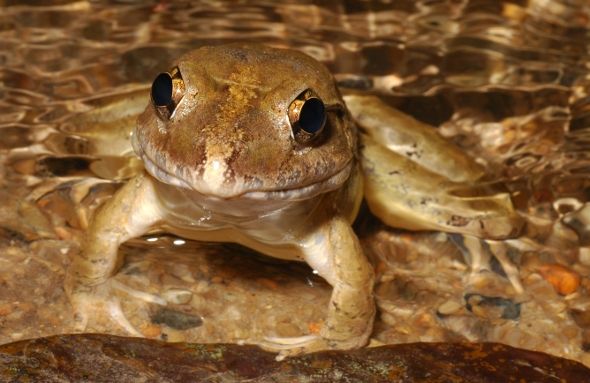
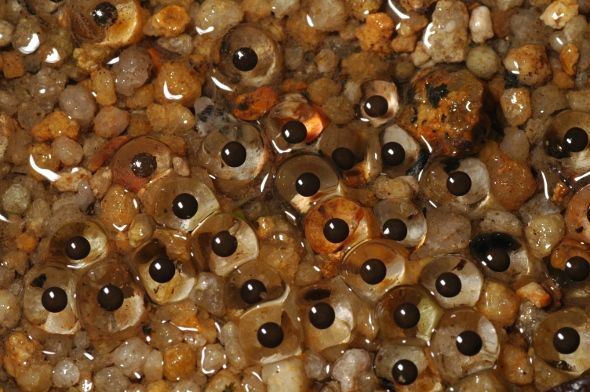
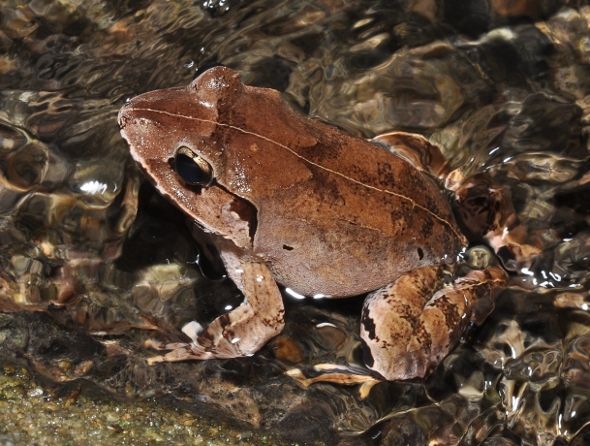
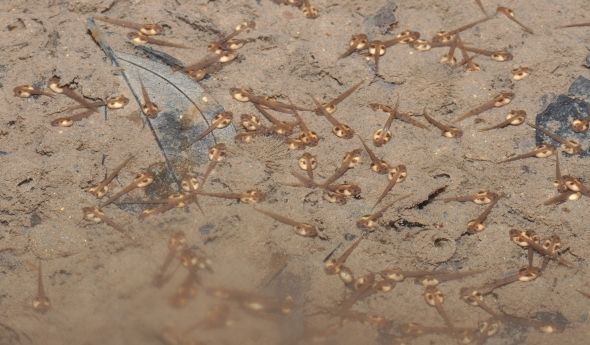

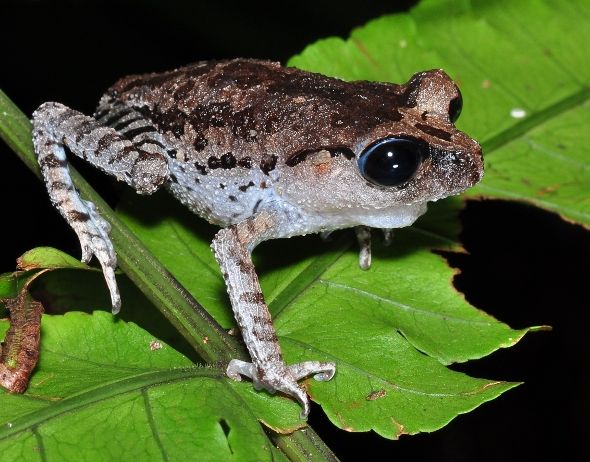


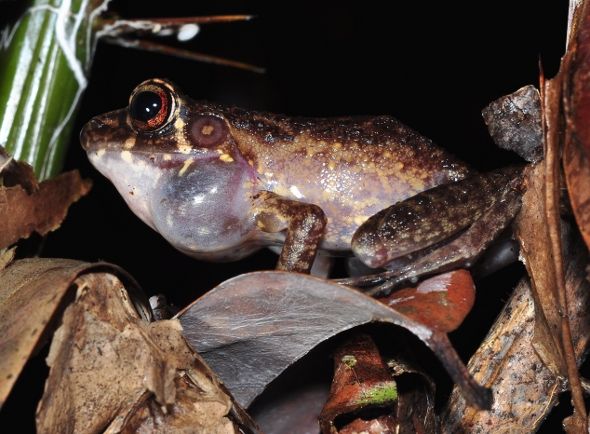
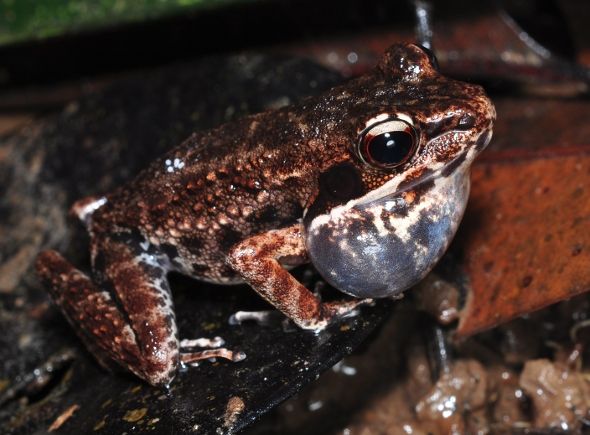
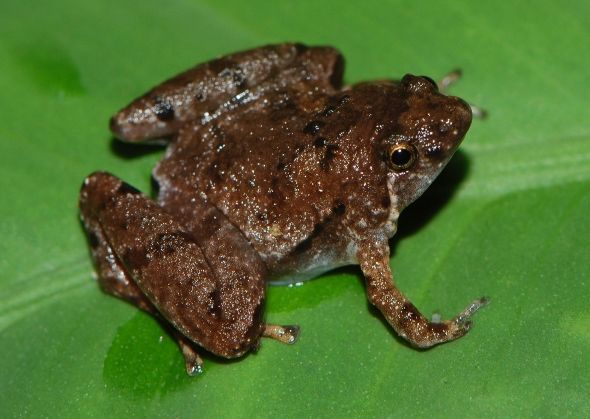




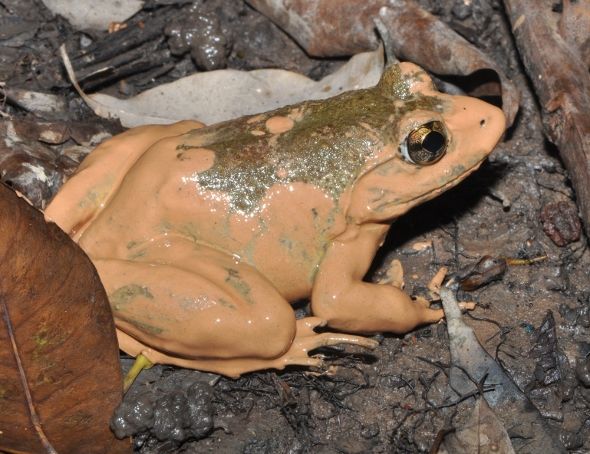







24 Responses
What can we do? Or more specifically, what can *I* do to help the MacRitchie cause? …And more importantly, will any action on our part make a difference?
When the intertidal zone of Chek Jawa in Pulau Ubin was under threat of being reclaimed some years ago,the government gave in to the ground swell of public opinion – in the form of thousands visiting the area to view the marine organisms, letters to the press, etc. The Nature Society was not involved then. I am sure if more people show that they are against the MRT line, the authorities will take notice. There will be a public protest on 22-23 June at Hong Lim Park organised by a group of concerned citizens – we will post details a few days before. Hope you and your friends will be there to show support… and to sign the petition!
I would like to, but I teach on weekends. Is the petition online so I can sign it and help publicise it?
I was told it would be. If so, we will publicise it.
OK I’m staying tuned.
Thanks so much for sharing such lovely pictures showing the wealth of different types of frogs which inhabit Singapore. The variation in size, color and habitats is quite astonishing!
You haven’t mentioned that losing frogs would have an important impact on the local ecology since frogs are important both as eaters of insects (and tadpoles eat algae) and as a major food source for many animals (including birds). Many people may not feel very interested in frogs, but they are an important part of nature, and as mentioned above they seem to be quite endangered these days.
Truly appreciate your encouraging words, Gretchen!
We need more people to understand and appreciate the values of amphibians in the ecosystem and for our well-being as much as you do.